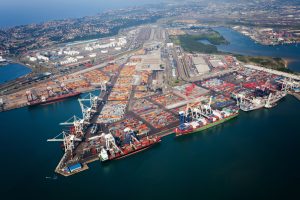On November 29, the eighth Ministerial Meeting of the Forum on China-Africa Cooperation (FOCAC) commenced in the Senegalese capital of Dakar. In recent remarks, Wu Peng, the director general of the Department of African Affairs of China’s Ministry for Foreign Affairs, signaled that agricultural cooperation, including increased agricultural investment in Africa and increased agricultural trade, will be a central topic of negotiation in Dakar’s conference rooms. This is to be expected – the sector is the backbone for 60 percent of African economic activities.
However, it is not a new emphasis. During the last two FOCAC meetings in 2015 and 2018, improved trade of agricultural goods was also a key area of discussion, featuring not only in the outcome documents but also in speeches by multiple African heads of state. At the time, African governments were conscious that while China had introduced a Duty Free Quota Free market access scheme (DFQF) in 2010 for Least Developed Countries (LDCs), this was not sufficient. African LDCs have to date seen more than a tripling of agricultural exports to China since 2010 – reaching $2.4 billion in 2020 – but total African products from all sectors still account for under 4 percent of China’s trade. And the view from China was that diversification of products from different countries and regions could well be in China’s food and national security interests.
So how have China’s agricultural imports from Africa changed since 2018? Have the commitments made by China in 2018 to open up its markets – such as for new expos and trade fairs – been successful, or at least indicated reason for optimism from the African perspective?
First, the context. In aggregate, annual figures for Africa-China trade dropped over the period 2018-2020, but then rose to a record breaking $139.1 billion in the first seven months of 2021. Trade for this year is expected to quickly surpass 2020’s figure of $186 billion. As Wu pointed out, this has included a both an absolute and relative increase in trade in agricultural products. China’s import of agricultural products from Africa rose from 3 percent to almost 6 percent of overall Chinese imports from the continent from 2018 to 2020.
However, there are three caveats to this overall progress.
First, the types of agricultural products exported remain quite limited. The top five categories of agricultural products African countries exported to China over 2018-2020 were seeds and fruits, tobacco, edible fruits and nuts, cotton, and wool. Together these products accounted for on average 83 percent of total Chinese agricultural imports from Africa. Notably, these goods are not imported in massive quantities. Therefore, while Wu correctly asserted that the import of agricultural products such as cotton and coffee doubled in the first seven months of 2021 compared to the same period in 2020, Chinese imports of cotton accounted for just 0.27 percent of total China imports from Africa, and coffee even less.
Second, while overall Africa’s LDCs supplied 60 percent of China’s total agricultural imports from the continent in 2020 (a rise since 2010, when the proportion was 48 percent), the key exporting countries remain fairly limited too. Just three countries – South Africa, Zimbabwe, and Sudan – accounted for almost half of China’s total agricultural imports from the continent between 2018-2020.
The third, and perhaps the most surprising, caveat is that China’s agricultural exports to Africa are not far behind Africa’s agricultural exports to China. In 2020, Africa exported $4 billion worth of agricultural goods to China, while China sent $3 billion worth in the opposite direction, including cotton, coffee, tea, spices, and cereals. While this balance has switched over the last 10 years (in 2009 China exported $1.5 billion worth of agricultural goods to Africa, and Africa sent $1.15 billion worth to China) there is clearly an opportunity for further rebalancing.
So what does this mean for the forthcoming FOCAC? Some commentators have dismissed the 2015 and 2018 FOCAC sessions, and more recent attempts by African leaders such as Uganda’s Museveni to push for better market access to China. The view of these commentators is that African governments should either focus on intra-Africa trade, especially given the newly operational African Continental Free Trade Area (AfCFTA), or focus on increasing yields and domestic productive capacity, or improving standards to ensure more readiness for trade. Their view is that any further “demand-side” changes to Chinese market access – for instance a continent-wide preferential trade area, the recommendation from two of my colleagues in a recent SAIIA paper – will make little difference.
While these views are important, the data above clearly show that it is wrong to dismiss market access efforts. Market access efforts have made a difference, even just over the last three years, and despite COVID-19 trade disruptions. But perhaps more importantly, there is no reason why market opening and local capacity building cannot be carried out in tandem. In fact, many African farmers argue that without market access, they have little incentive to invest in improving capacity.
Market access is a necessary but not sufficient condition for increased exports from Africa to China, but the opposite is not true. Multiple African ambassadors in China, for instance, have made the case for more and diversified agricultural exports from Africa to China, for goods from coffee to avocados to sesame seeds, because they are constantly in contact with bona fide African producers working hard to sell their goods into China.
So what does this mean for FOCAC 2021? No doubt, African agricultural exports to China should remain a key agenda item, with equal emphasis on both unlocking Chinese demand and African supply. If so, many African farmers can expect significant new growth by 2024.
Trade data sourced from U.N. Comtrade and ITC Trade Map.

































